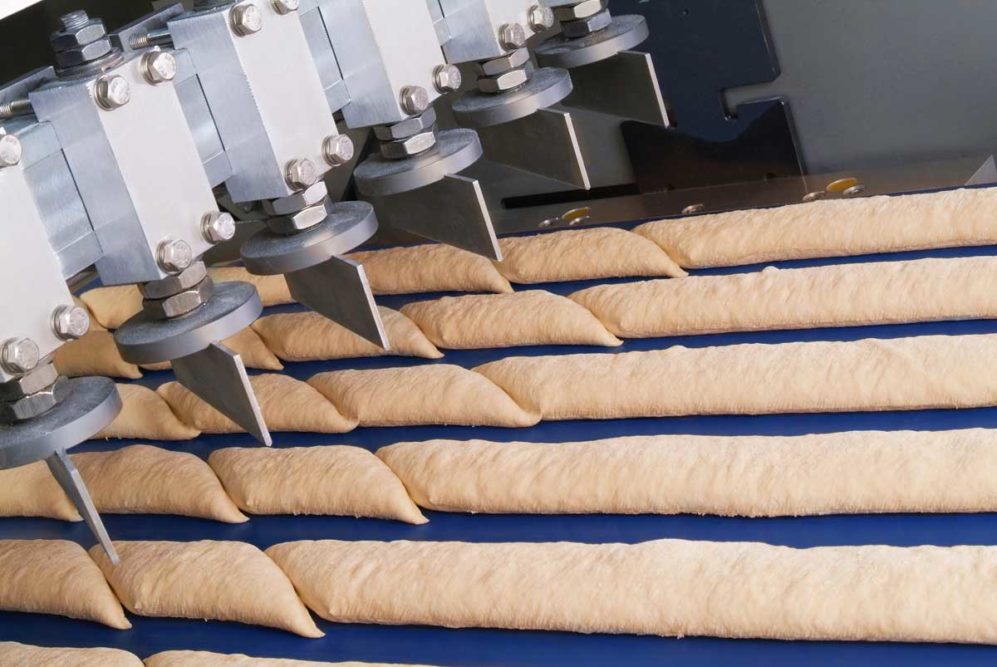Listen to the story
Open cell structure and depth of flavor are two hallmarks of artisan breads. Both are developed by fermentation times that can stretch into hours. It is critical to a craft bread’s profile, and bakers are often unwilling to compromise on this step.
“Fermentation is the slow and natural process to transform simple ingredients into products that are healthy and full of flavor,” said Nick Magistrelli, vice president of sales, Rademaker USA.
Letting the dough rest and develop can happen at various steps in the process. There’s floor time between mixing and dough processing. That’s pre-fermentation. Intermediate proofing happens after processing but before the dough develops its final shape, and then the final proof occurs just before the product goes into the oven.
“For artisan bread production, fermentation has been the ultimate challenge in recent years,” said Rich Breeswine, president and chief executive officer, Koenig Bakery Systems. “The most critical point is the timing between mixing and dough processing, for example, for artisan bread doughs with long floor time and different batches of dough. These fermented doughs tend to have a far more sensitive structure compared to, for example, bun doughs.”
Fermentation is critical to artisan bread, but as bakeries scale up, it can pose a lot of challenges. Storing dough in bowls or troughs is the most common method of fermentation, particularly pre-fermentation. However, this takes floorspace as well as labor and does not come without risk.
“You can degas some of that dough in the transfer just into a bowl and out of a bowl as it gets handed off to the front of an artisan bread line,” Mr. Magistrelli said. “The advantage to automating the fermentation process is reducing the overall amount of labor while improving product consistency. At the same time, this also creates an environment to increase capacity and yield.”
When bakers raise capacity, space, labor and product consistency become issues as they accommodate the extra dough they’re mixing.
“Products like baguette, ciabatta and highly hydrated bread in general often require two proofing chambers, one before and one after the shaping,” said Franco Fusari, commercial director and co-owner of Minipan. “This involves a lot of money and space and can be a great wall to climb.”
To assist with that need for extra space and proof time, Minipan’s r_EVOLUTION line features a long resting stage with controlled retarding time, temperature and humidity. The dough rests on a conveyor for the needed gluten development before coming together naturally. Mr. Fusari said bakers using this system haven’t needed secondary proofing.
Bakeries can also get creative with how they use space with customized proofers. Koenig does this with highly flexible building-block systems. This allows the company to assemble proofers around the baker’s space requirements.
“In recent years, Koenig has built proofers in small footprints into the next building floors, above the bread line, under a roof and even downwards into basements,” Mr. Breeswine said.
Controlling the environment is vital to optimize the dough’s development. WP Bakery Group USA’s intermediate proofers feature control systems that allow for not only control of humidity and temperature settings but also flexibility in changing those settings to accommodate different doughs.
AMF Bakery Systems offers fully automated fermentation rooms for bakers scaling up their fermentation. Dough is fermented in troughs, but the room is designed for the exact footprint of the quantity of troughs required for the specified fermentation time. It can be integrated with the company’s mixing technologies to optimize the floor layout and save space.
Using an automated system helps ease the burden on labor as well. Troughs and bowls of dough are heavy, and moving these implements can be dangerous and wearing on employees. AMF offers automated guided vehicles (AGVs) to transport dough troughs. The automated fermentation systems are pre-programmed with optimal fermentation time and manage all the transportation from the sponge mixer to the final mixer and back again.
“Since the system is managing the trough handling, all operators can focus on the value-added activities such as handling the ingredients and performing quality checks,” said Bobby Martin, executive product manager, AMF Bakery Systems. “This automation equipment is a great example of people safety improvements as the heavy dough troughs are handled only by the equipment rather than a human body.”
With its delicate cell structure, artisan bread dough can be testy to work with, so any step where a baker can reduce the amount of human interaction is beneficial. Rademaker does this with its pre-fermentation conveyorized solution. This system chunks the dough after mixing and then staggers those chunks on a stacked conveyor belt. Rademaker minimized the amount of falling heights in the way dough is guided through the system to preserve the most consistent cell structure possible in the dough.
“The intent behind the design was to remove inconsistencies in the dough because, first of all, you’re minimizing the labor,” Mr. Magistrelli explained. “If you eliminate the labor step of this process, you automatically become more consistent in the way you handle the dough after it’s mixed.”
This increase in consistency, and therefore quality, can ease concerns about how increasing automation could diminish the artisan characteristics.
“Incorporating automated fermentation, either the transport of mixing bowls or automated final proofing and oven loading, does not necessarily mean losing the ‘artisan’ style,”
Mr. Breeswine said. “Same goes for bread quality; automation does not downgrade the product’s quality in any way, quite the opposite. There is a general quality increase due to the long-term fermentation and consistent conditions. By using automated fermentation, the bread dough has time to develop and will become more digestible, meaning no use of additives, as the taste and extended shelf life are created naturally.”
All this improved quality, however, can be undone during processing if the dough is not handled correctly.
This article is an excerpt from the March 2020 issue of Baking & Snack. To read the entire feature on artisan bread tech, click here.





